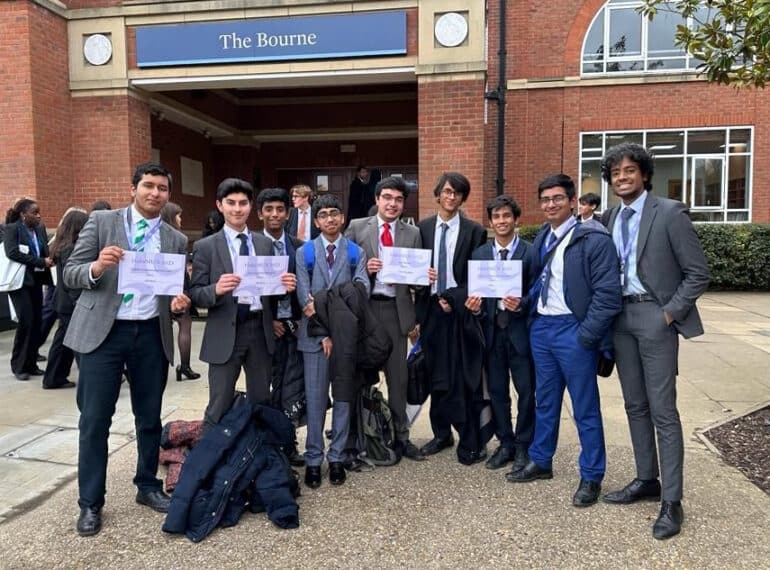
Four QE delegates won awards for their public speaking and debating skills at a Model United Nations conference.
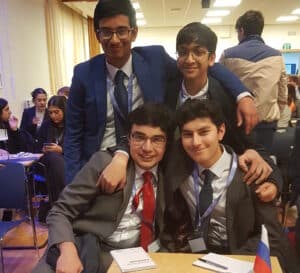 The three-day weekend ‘HabsMUN’ event, hosted by Haberdashers’ Boys’ School, saw a ten-strong QE team take on more than 500 delegates from other leading schools.
The three-day weekend ‘HabsMUN’ event, hosted by Haberdashers’ Boys’ School, saw a ten-strong QE team take on more than 500 delegates from other leading schools.
MUN gatherings are designed to simulate real UN conferences, with teams representing countries’ interests. Half of the QE group represented Nigeria, while the remaining five delegates had the difficult task – given current political circumstances – of speaking for Russia.
One of the latter, Zaki Mustafa, positively relished the opportunity: “Spending a weekend in the mind of Vladimir Putin was both a thought-provoking and exhilarating experience. I got the chance to defend Russia’s actions in front of hundreds of people without them all walking out on me!”
Assistant Head (Pupil Involvement) Crispin Bonham-Carter said: “Our students made eloquent and persuasive contributions and were duly rewarded: with four out of ten of them earning awards, QE was among the most successful schools there.
“It was an outstanding result, achieved in spite of the strong competition our boys faced, their relative lack of experience (with so many events cancelled during the pandemic, this was the first in-person conference for all of them), and the lack of time for preparation, since the event came directly after our Year 11 mock exams. Part of the academic challenge of the Model United Nations is that participants are called on to argue from the viewpoint of their assigned country and thus often face the task of promoting causes and outcomes they would not personally agree with.”
The awards went to:
- Saim Khan (Best Delegate in the Security Council – the top award for an individual delegate)
- Zaki Mustafa (Distinguished Delegate in Disarmament and International Security)
- Ady Tiwari and Uday Dash (Highly Commendable Delegates in Special Political 2 and Disarmament and International Security respectively)
In addition to Zaki, the Russia delegation comprised Saim Khan, Koustuv Bhowmick, Keshav Aggarwal and Hari Rathakrishnan. Representing Nigeria were: Chanakya Seetharam, Uday Dash, Kanusan Naveendran, Hari Kumarappan and Ady Tiwari. All are in Year 11, except Keshav Aggarwal and Hari Rathakrishnan (both Year 9).
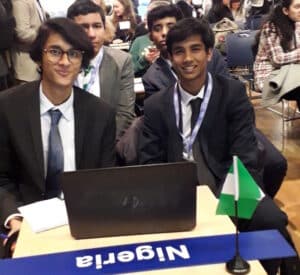 They fended off challenges from several powerful country delegations, including Habs (representing the USA), Royal Masonic School for Girls (UK) and North London Collegiate School (China).
They fended off challenges from several powerful country delegations, including Habs (representing the USA), Royal Masonic School for Girls (UK) and North London Collegiate School (China).
Saim spoke of his surprise at winning his award, presented in front of all the other delegates – “truly an unforgettable and powerful moment”.
His favourite part of the conference was, however, “the opportunity to meet some fantastic people with whom I have made some great memories, whether it was clashing horns with the US over the future of Afghanistan, participating in icebreaker challenges where the delegate of Ecuador confidently stated she could defeat a black bear, or just working together with other delegates to achieve some fruitful debate”.
Similarly Uday said: “I have formed connections and met some fantastic people through this conference, which has undoubtedly been the best part of this process. Having debated strongly with and against them (with a little bit of karaoke sprinkled in between!), I have no doubt that I will continue to form stronger bonds with these people throughout my life.”
Uday’s fellow Nigeria delegate, Chanakya, added: “As someone with a keen eye for detail, I found that HabsMUN proved the ultimate opportunity to ‘geek out’ about what were, superficially, the trivialities of international law. Whether it was considering territorial disputes in the South China Sea, the International Court of Justice’s precedent, or the moral responsibilities of corporations towards society, the conference provided a challenging, yet rewarding, forum in which to debate geopolitical issues.”

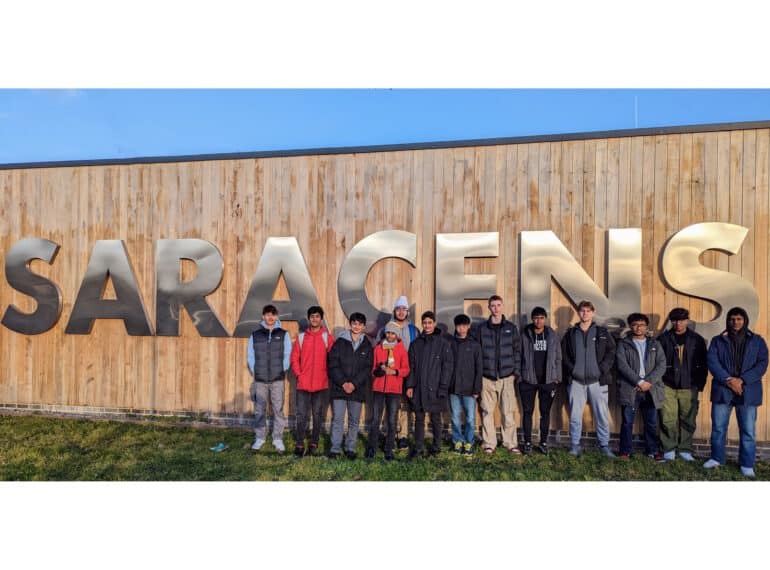

 The group flew to the resort of Panorama in British Columbia on a eight-day trip during which they were able to enjoy five days of “fantastic” skiing.
The group flew to the resort of Panorama in British Columbia on a eight-day trip during which they were able to enjoy five days of “fantastic” skiing.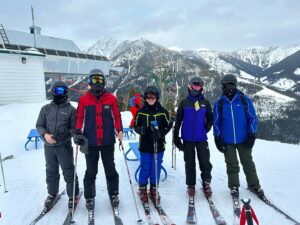 Their destination, Panorama Mountain Resort, which was founded as recently as 1962, is accessed by road from the town of Invermere, which is 11 miles away. It boasts one of the highest vertical drops in North America – some 1,300m.
Their destination, Panorama Mountain Resort, which was founded as recently as 1962, is accessed by road from the town of Invermere, which is 11 miles away. It boasts one of the highest vertical drops in North America – some 1,300m.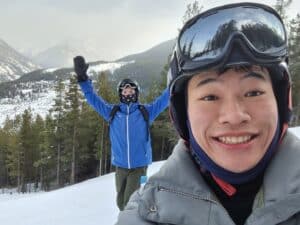 Having ‘slope side’, or ‘ski in, ski out’, accommodation meant it was quick, safe and convenient for the boys. It also had the advantage of being next to the resort’s hot springs, offering skiers great scope for relaxation and recovery after a hard day’s physical activity.
Having ‘slope side’, or ‘ski in, ski out’, accommodation meant it was quick, safe and convenient for the boys. It also had the advantage of being next to the resort’s hot springs, offering skiers great scope for relaxation and recovery after a hard day’s physical activity.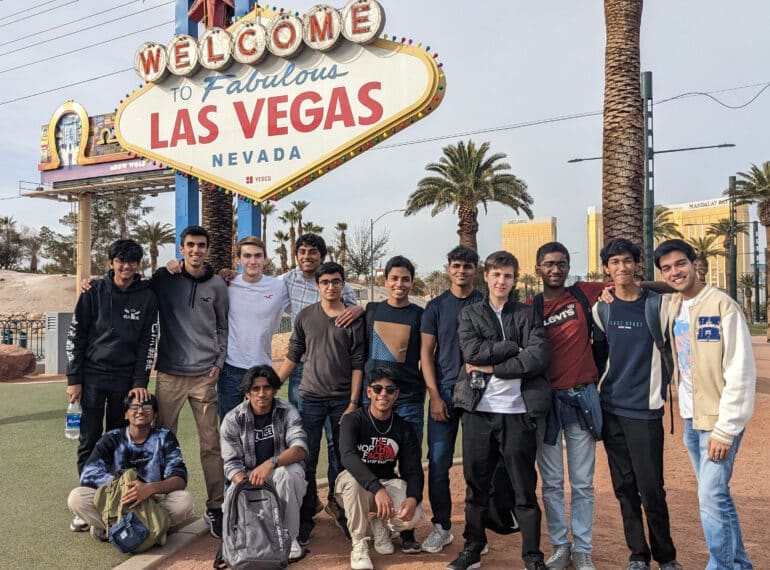
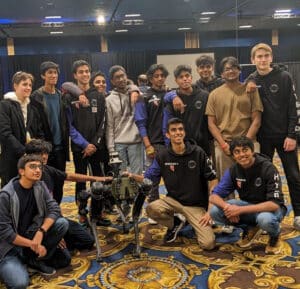 The QE boys, who made up the only teams from outside North America to attend, enjoyed both the competition and the chance to take in Las Vegas’s spectacular attractions.
The QE boys, who made up the only teams from outside North America to attend, enjoyed both the competition and the chance to take in Las Vegas’s spectacular attractions.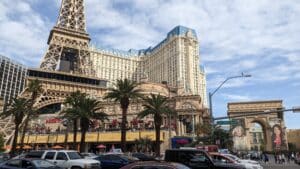 They then made their way along Vegas’s celebrated Strip. “One highlight in particular was The Venetian – a resort and hotel, which boasts an indoor network of Venice-style canals, complete with singing gondola drivers!” said Mr Noonan. Further down the street, they took in the famous Welcome to Las Vegas sign and marvelled both at the water & light show at the fountain of the Bellagio and at the incredible complexity of the part-roller coaster, part-hotel New York New York attraction. “Racking up close to 30,000 steps over the course of the day was not enough, though, as the pupils made their way to the Area 15 entertainment complex, wondering at many of the audio-visual wonders on offer, and at the surreal Omega Mart [an exhibition billed as ‘an interactive, mind-bending immersive art experience’].”
They then made their way along Vegas’s celebrated Strip. “One highlight in particular was The Venetian – a resort and hotel, which boasts an indoor network of Venice-style canals, complete with singing gondola drivers!” said Mr Noonan. Further down the street, they took in the famous Welcome to Las Vegas sign and marvelled both at the water & light show at the fountain of the Bellagio and at the incredible complexity of the part-roller coaster, part-hotel New York New York attraction. “Racking up close to 30,000 steps over the course of the day was not enough, though, as the pupils made their way to the Area 15 entertainment complex, wondering at many of the audio-visual wonders on offer, and at the surreal Omega Mart [an exhibition billed as ‘an interactive, mind-bending immersive art experience’].”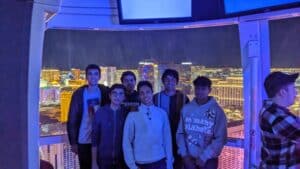 After this once-in-a-lifetime opportunity, the boys returned to their robotics, making final preparations for the following day of qualification, as well as taking part in some impromptu practice sessions. “As the only overseas team at the event, the other 100 or so US, Canada and Mexico-based teams were very eager to get to know the QE teams, with lots of potential alliance links formed,” said Mr Noonan. They topped off the day with a visit to the “incredible” High Roller observation wheel at The LINQ Hotel – a 550ft wheel offering breath-taking views over the Strip.
After this once-in-a-lifetime opportunity, the boys returned to their robotics, making final preparations for the following day of qualification, as well as taking part in some impromptu practice sessions. “As the only overseas team at the event, the other 100 or so US, Canada and Mexico-based teams were very eager to get to know the QE teams, with lots of potential alliance links formed,” said Mr Noonan. They topped off the day with a visit to the “incredible” High Roller observation wheel at The LINQ Hotel – a 550ft wheel offering breath-taking views over the Strip.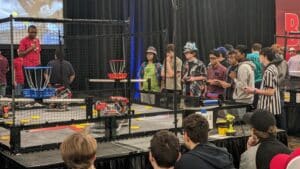 After their disappointments on day 1, team HYBRID began day 2 still determined to finish in the automatic alliance spots in their division. “They succeeded in doing so, finishing the qualification section ranked 21st, and allying with team 3303S Dublin Robotics from Dublin, California,” said Mr Noonan. “They built up a great relationship with them through collaboration and discussion over the two days and were always likely to pick this team. Sadly, there was further disappointment for them, as they were cruelly denied by disqualification on a technicality in their round-of-16 game.”
After their disappointments on day 1, team HYBRID began day 2 still determined to finish in the automatic alliance spots in their division. “They succeeded in doing so, finishing the qualification section ranked 21st, and allying with team 3303S Dublin Robotics from Dublin, California,” said Mr Noonan. “They built up a great relationship with them through collaboration and discussion over the two days and were always likely to pick this team. Sadly, there was further disappointment for them, as they were cruelly denied by disqualification on a technicality in their round-of-16 game.”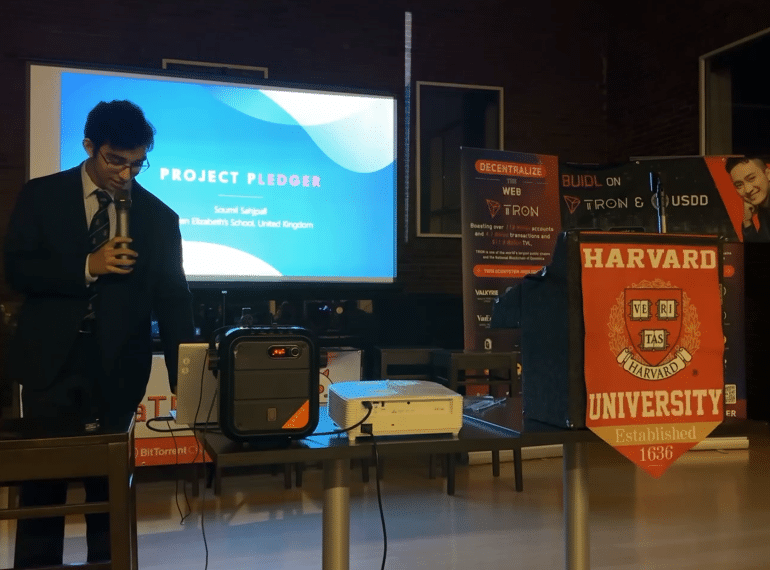
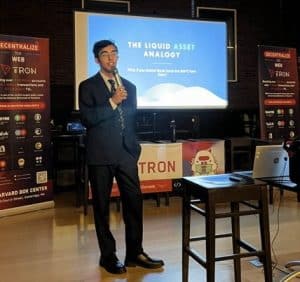 During his trip to the US, Soumil rubbed shoulders with Ivy League students as he developed blockchain software for cryptocurrency TRON in a coding marathon. His app earned him an ‘honourable mention’ from the judges, who placed him in joint-ninth place out of 55 teams.
During his trip to the US, Soumil rubbed shoulders with Ivy League students as he developed blockchain software for cryptocurrency TRON in a coding marathon. His app earned him an ‘honourable mention’ from the judges, who placed him in joint-ninth place out of 55 teams.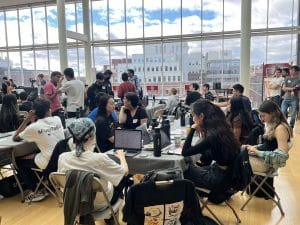 TRON, a leading cryptocurrency with a current market value of $5 billion, set a brief to develop a dAPP, or “decentralized app” – that is, software that runs on the blockchain, as opposed to on a server hosted by technology giants such as Amazon or Microsoft.
TRON, a leading cryptocurrency with a current market value of $5 billion, set a brief to develop a dAPP, or “decentralized app” – that is, software that runs on the blockchain, as opposed to on a server hosted by technology giants such as Amazon or Microsoft.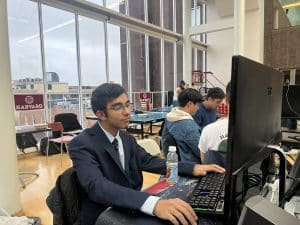 “I found out about this hackathon with relatively short notice, so I competed solo,” he said. “I was relatively confident in my abilities and knew I’d still be having lots of fun, so that was all right. The average team size was around four members – with a maximum of five – so I was at a disadvantage.”
“I found out about this hackathon with relatively short notice, so I competed solo,” he said. “I was relatively confident in my abilities and knew I’d still be having lots of fun, so that was all right. The average team size was around four members – with a maximum of five – so I was at a disadvantage.”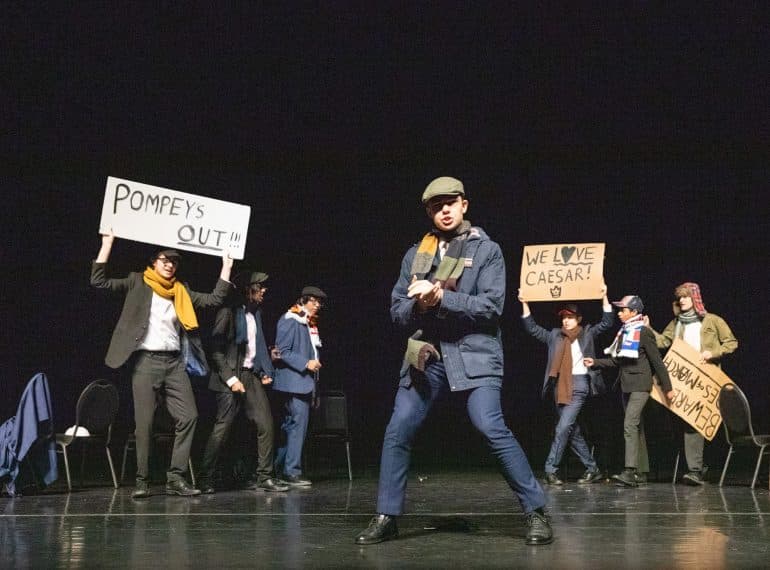
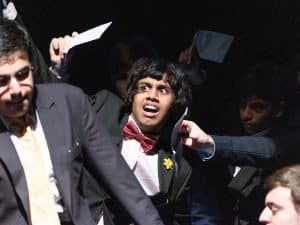 The boys put on Julius Caesar at North Finchley’s artsdepot in the Shakespeare Schools Festival and then twice in School to Years 9 and 11 as part of QE’s inaugural Shakespeare and Latin Festival.
The boys put on Julius Caesar at North Finchley’s artsdepot in the Shakespeare Schools Festival and then twice in School to Years 9 and 11 as part of QE’s inaugural Shakespeare and Latin Festival.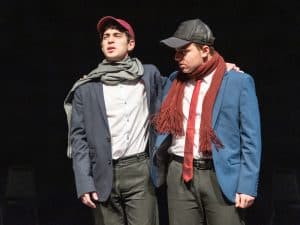 “Many congratulations should go to the whole cast and crew, as the actors allowed some of Shakespeare’s most famous lines to shine – from Mark Antony and Brutus’ soaring funeral orations to Caesar’s resigned acceptance of his fate,” said Mr Hyland.
“Many congratulations should go to the whole cast and crew, as the actors allowed some of Shakespeare’s most famous lines to shine – from Mark Antony and Brutus’ soaring funeral orations to Caesar’s resigned acceptance of his fate,” said Mr Hyland.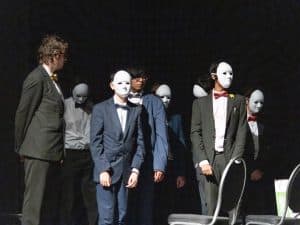 “The students have embraced the themes and the concept, and they have provided more pieces of inspired drama and theatricality than I could have hoped for. For that, and for their general work ethic and insatiable enthusiasm, I thank them,” Mr Lister added.
“The students have embraced the themes and the concept, and they have provided more pieces of inspired drama and theatricality than I could have hoped for. For that, and for their general work ethic and insatiable enthusiasm, I thank them,” Mr Lister added.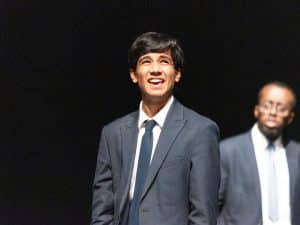 Year 11 actor Uday Dash said: “I had to adapt and build Cassius into a manipulative, calculating character, which was both a challenge and a unique experience.”
Year 11 actor Uday Dash said: “I had to adapt and build Cassius into a manipulative, calculating character, which was both a challenge and a unique experience.”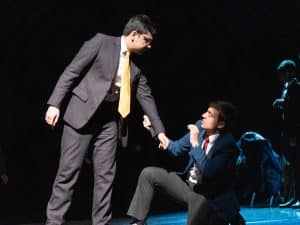 Assistant Head (Pupil Involvement) Crispin Bonham-Carter said: “Dr Pillinger drew out the links between Baz Luhrmann’s film of The Great Gatsby, Fitzgerald’s novel and the ancient Latin text, The Feast of Trimalchio.”
Assistant Head (Pupil Involvement) Crispin Bonham-Carter said: “Dr Pillinger drew out the links between Baz Luhrmann’s film of The Great Gatsby, Fitzgerald’s novel and the ancient Latin text, The Feast of Trimalchio.”